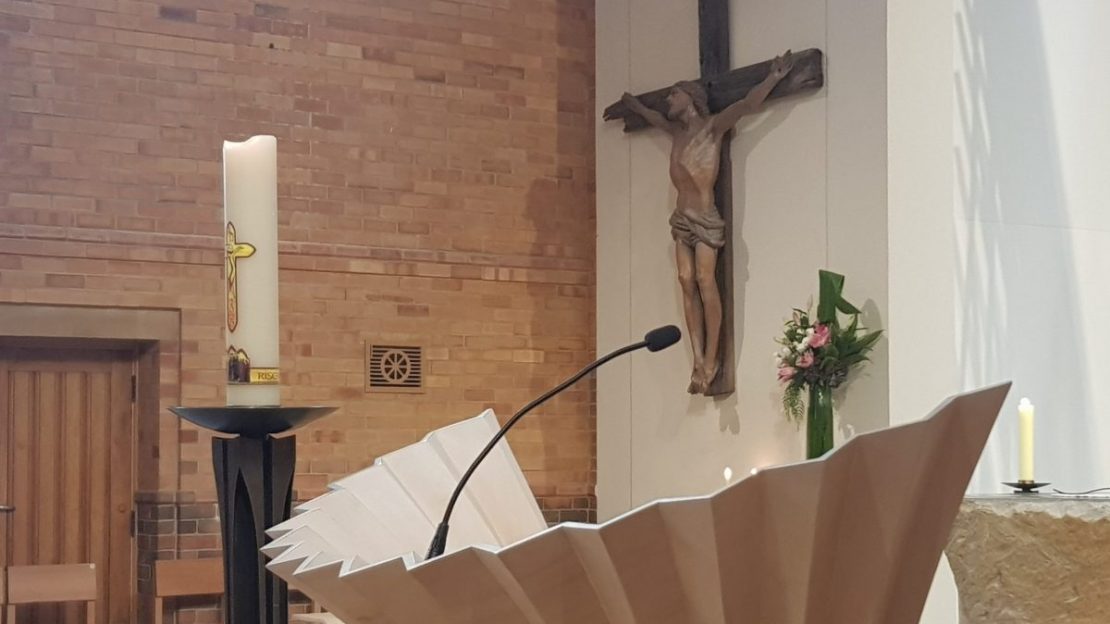The Liturgy of the Word reaches its climax in the reading of the Gospel. You will have noticed that we stand for the Gospel, whereas we sit for the other two readings. The gospel is treated with especial dignity: it is preceded by the ‘Alleluia’; candles can be held beside the lectern while the gospel is being read and incense can be used to honour the gospel text, and it is proclaimed by an ordained minister.
Our responses before and after the gospel are also different to those used for the first two readings. In these responses we acclaim Christ directly. The priest or deacon says: ‘A Reading from the Holy Gospel according to Mark’ (or from whichever gospel), and the people respond ‘Glory to you, O Lord’. At the end of the gospel we have ‘The Gospel of the Lord’ and the people respond ‘Praise to you, Lord Jesus Christ’.
It is no accident that the peoples’ responses are different because Christ’s words continue to echo down to us through the gospel passages that are read. We are intended to take these words to heart and allow them to create responses within our hearts and minds. And so we acclaim the Lord himself as we take these words we have heard as his own.
It has always been a specific part of the Christian Faith that all of the old testament is seen as leading up to Jesus and only reaches its full meaning in him. The Liturgy of the Word reflects this faith in Jesus as the Christ.
The way the readings for Sunday Masses were chosen also reflects the centrality of the gospel. So as the Lectionary was being set up, it was the readings from the gospels which were first chosen. Then a passage from the Old Testament was chosen which was in some alignment with that passage of the gospels. Then a Responsorial Psalm was chosen as a fitting response to the first reading, which reflected the gospel. So there is normally a consonance between the gospel passage and the passage from the Old Testament.
Such is not the case with the second reading. It follows a different pattern which is called a continuous reading. This means that a series of readings are used which come from the same new testament letter. So there is not usually an explicit consonance between the second reading and the other two.
More on the Liturgy of the Word next week…..
By Frank O’Loughlin




Comments
Add Comment